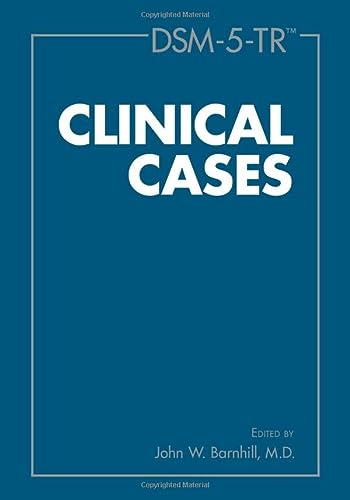

Most ebook files are in PDF format, so you can easily read them using various software such as Foxit Reader or directly on the Google Chrome browser.
Some ebook files are released by publishers in other formats such as .awz, .mobi, .epub, .fb2, etc. You may need to install specific software to read these formats on mobile/PC, such as Calibre.
Please read the tutorial at this link. https://ebooknice.com/page/post?id=faq
We offer FREE conversion to the popular formats you request; however, this may take some time. Therefore, right after payment, please email us, and we will try to provide the service as quickly as possible.
For some exceptional file formats or broken links (if any), please refrain from opening any disputes. Instead, email us first, and we will try to assist within a maximum of 6 hours.
EbookNice Team

Status:
Available4.5
38 reviewsThe cases and discussions make for fresh, compelling reading for both experienced clinicians and those new to diagnostic classification. Case authors were selected for their expertise in the diagnostic categories described in the specific case.
Cases and their accompanying discussions adhere to a consistent format developed by the editor to fully illuminate the disorder being profiled. Areas explored in case discussions may include patient history (e.g., present illness, family psychiatric history, medical conditions), mental status exam and laboratory test results, and sex-, gender-, and culture-related issues. Each case closes with one or more diagnoses and a list of suggested readings.
As is often true in real life, the cases are incomplete, and not all diagnoses are clear-cut. The discussions often explore how the case may not entirely fit diagnostic criteria, and what other information might be helpful.
A comprehensive index enables readers to locate cases by type of disorder, special interests, and DSM-5-TR diagnosis.
The book is designed to serve as an auxiliary text in a variety of contexts—from graduate-level psychology courses to medical school and residency training programs to social work curricula. In addition, practicing clinicians can use the book to help firm up their diagnostic skills and to prepare for specialty examinations.DSM-5-TR Clinical Cases is intended to accompany DSM-5-TR. Each of this book’s 104
cases begins with a clinical vignette followed by a case discussion. The cases are
organized to fit into one of the 19 core DSM-5-TR chapters. In other words, a case that
features borderline personality disorder will be found in the chapter on personality
disorders. In cases that feature co-occurring disorders, the case will be found in the
chapter on what is considered to be the primary psychiatric disorder (although
…